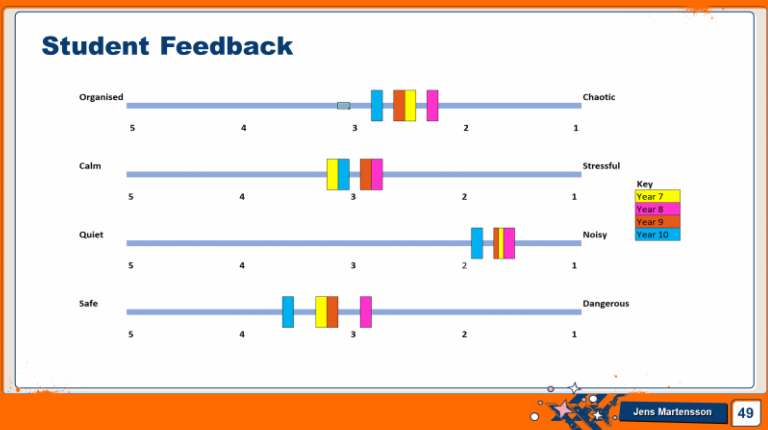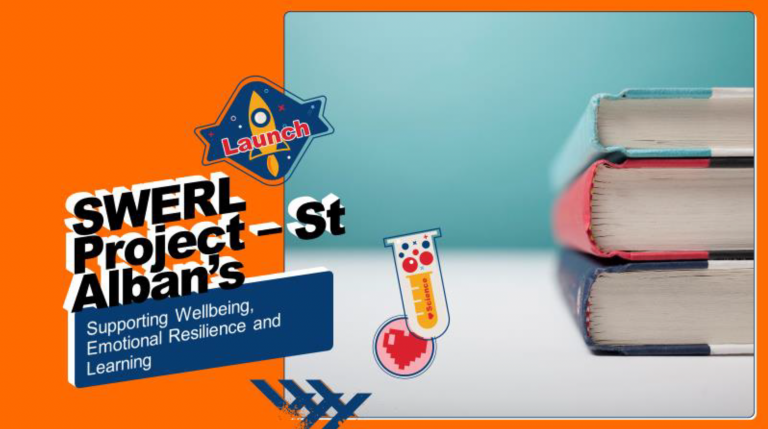Our thesis: If we reduce the amount of noise, and improve the movement of students around the school site, this will lower anxiety for students and aim to reduce behaviour incidents in classrooms .
Our Approach
#559 “SWERL” Supporting Wellbeing, Emotional Resilience and Learning – St Alban’s Catholic High School
What did we do?
The Audit
The audit was completed collaboratively by all staff, This was achieved by putting each domain, including the associated criteria, onto coloured sheets of A3 paper. Staff attached ratings and comments to each domain, enabling the SWERL team to assess each domain against the school context. A student survey was also undertaken, asking ‘What does it feel like when students move around the school?’
The results included:
- Noisy.
- Crowded.
- Claustrophobic.
- Congested.
- Frantic.
- Stressful.
- Boisterous.
What is it like now?
- Noisy, frantic, claustrophobic, dangerous, stressful.
- Students late to lessons.
- Corridors that are tight and cramped.
- Movement is often slow and congested.
How would we like it to be?
- Quieter and calm.
- Appropriate behaviours.
- Improved flow of students around the site.
- Reduce stress and anxiety for everyone.
- Students arrive to lessons on time and ready to learn.
What are the benefits?
- The benefits are for everyone!
- Students on time and ready to learn.
- Less stress and anxiety.
- Reduction in intimidating behaviour.
- Improved wellbeing.
- School being a happier place for everyone.
- Routine and structure.
- Improved behaviour.
- Increased learning and progress.
Process
- After initial consultation and audit the plan was explained to staff during a staff briefing.
- HOY ran assemblies to explain the SWERL project and the benefit it could have on our entire school community.
- Two week pilot run focusing on improving movement around the school and establishing more appropriate behaviours whilst students are in transit.
The school identified ‘hot spots’ such as the main building: particularly 1st and 2nd floor corridors/stairwells; courtyard; outside the new 6th Form block and outside both A and Science block.
Outcomes and Data Collection
Student feedback and school-based behaviour incident data were collected (see the image section):
- Increase directional signage and normative massaging.
- “Thank you for behaving calmly in the corridors”.
- “Please walk to the left”.
- Increased seating to be purchased to encourage use of quiet areas during social time.
- Staff development on PD Day 1 (2 September) on SEMH in the classroom.


